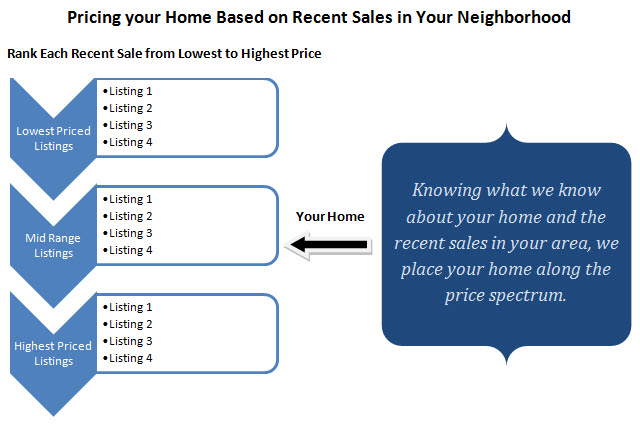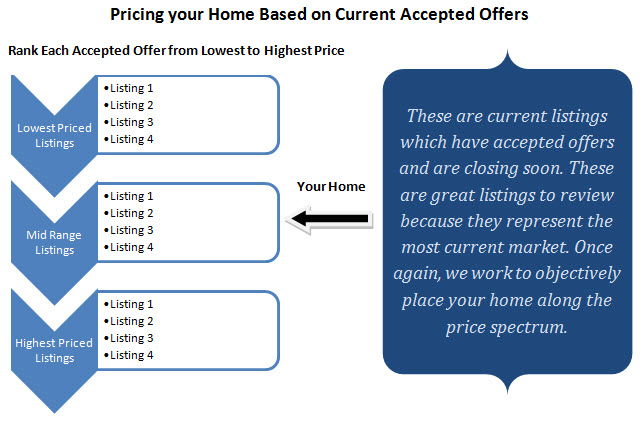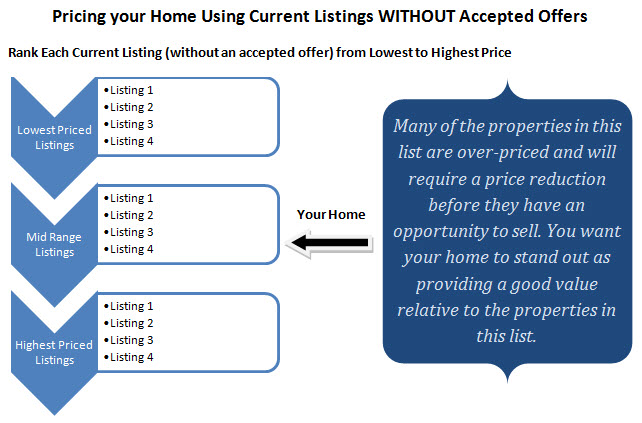Pricing Your Home in 6 Steps
Posted by Dan Miller, REALTOR on Thursday, April 16th, 2015 at 5:07am.
 A good market analysis can help you discover your home's value with a high degree of accuracy. We begin every market analysis with a visit to your home. During our visit we tour your house with you in order to gain a good understanding of your property's features and finishes. We take a lot of notes, and we may even take a few pictures (for our eyes only).
A good market analysis can help you discover your home's value with a high degree of accuracy. We begin every market analysis with a visit to your home. During our visit we tour your house with you in order to gain a good understanding of your property's features and finishes. We take a lot of notes, and we may even take a few pictures (for our eyes only).
We also use our visit as an opportunity to discuss staging and low cost cosmetic improvements. At this stage in the process, we often call on our home stager, who will help you put a game plan in place for preparing your home for sale.
After our visit we head back to our office and complete your market analysis for you. Our analysis covers 6 key areas. These 6 areas are summarized below.
Determining Your Home's Market Value - 6 Key Steps
1. Evaluate the recent sales in your neighborhood: We pull all of the recent sales in your neighborhood, and we rank each sold listing from lowest to highest price. Then we review each listing closely (including photos, virtual tours, and listing descriptions), as we objectively compare your home to the homes in our list. Then we ask ourselves, knowing what we know of your home and the recent sales in your neighborhood, where your home belongs in the list.

2. Assess current listings WITH accepted offers: In fast-moving markets, recent sales can quickly become outdated. Every property in this list represents a current listing with an accepted offer. In other words all of the properties in this list will be closing soon. This is a great group of listings to review because we know every one of these properties is priced correctly for the most current market. As in the process above, we rank each accepted offer from lowest to highest price. And once again, we work to objectively place your home along the price spectrum.
The number of accepted offers can also provide some great clues about your local market. If there are as many listings in your area with accepted offers as there are without, this suggests you live in a fast-moving, seller's market. If your area has very few accepted offers relative to the total supply of listings, this suggests you live in a more challenging buyer's market.

3. Evaluate current listings WITHOUT accepted offers: None of the properties in this list has an accepted offer. Because of this we know many of these listings will require a price reduction before they have an opportunity to sell. These are the properties your home will be competing against when your home hits the market, so you want your home to stand out as providing a good value relative to the properties in this list.

4. Calculate the months of supply for your neighborhood. This is another method we can use to determine whether you live in a buyer's market or a seller's market. If you live in a neighborhood where the months of inventory are low (a seller's market), this dynamic supports a high market price for your home. If you live in a neighborhood where the months of supply are high (a buyer's market), this factor typically supports more conservative pricing.

5. Review the expired listings in your neighborhood. These are the listings that are withdrawn from the MLS after not achieving a sale. Overpricing is the chief culprit behind most expired listings. Expired listings provide more great information about the market in your area. First, they show you the price points that are too high for your neighborhood market. Second, the number of expired listings can provide more clues about whether you live in a buyer's market or a seller's market. If your neighborhood has many more listings sell than expire, this suggests you live in a seller's market. If the number of sold and expired listings in your area are roughly equal, this suggests you live in a more challenging buyer's market.

6. Account for the seasonality of the market. Late winter and spring are typically the best times to list a home in the Madison real estate market. With that said you can list your home at any point during the year and end up with a successful sale. The key is knowing how the dynamics of the market change throughout the calendar year. For example, if you list your home during the hot spring market, you and your agent may decide to price your home on the high side of what the recent sales in your area suggest. If you list in November or December, you may decide to price your home more conservatively.

Pricing a Home is a Team Effort
We use a market analysis to paint a picture of your market. Then we ask you to review the analysis so you can form your own conclusions about your home's value. Next, we have a short conversation about what the data says and how you should price your home. This collaborative approach helps us develop a mutual understanding of your market and your home's value. It also helps us get your pricing right at the very beginning of your listing.
More Home Pricing Information
Soon we'll share an actual market analysis which we recently completed for a home owner on Madison's west side. In the meantime, here are more common sense home pricing tips from the House Logic blog.
